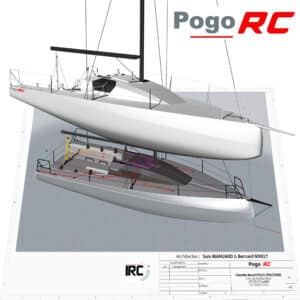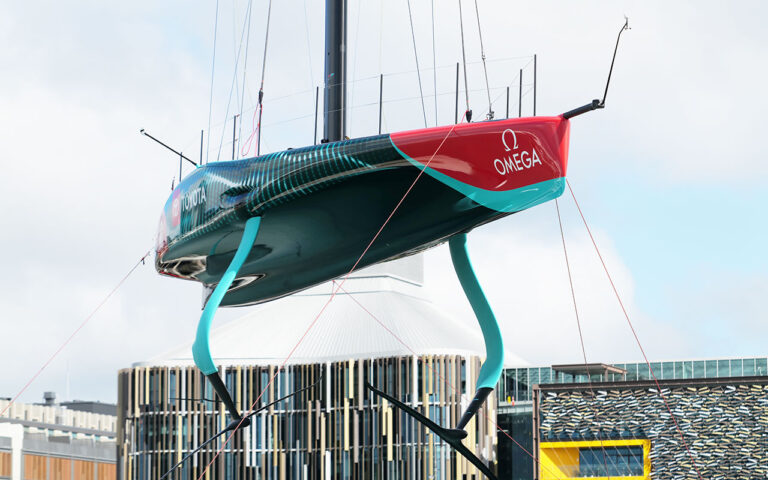
PRBst
With PRB, Vendee Globe winner Vincent Riou and Farr Yacht Design have delivered the first of a new generation of Open 60s designed specifically for the 2008 Vendee, and if their “virtual” sailing told them anything before the boat’s September launch, it’s that this solo-racing machine is potentially the most powerful IMOCA 60 ever built.”In general, [the new 60s] are going to more beam,” says Luke Shingledecker, a naval architect with FYD. “There’s a cap where the angle of vanishing stability [the point at which a boat capsizes] goes lower as you go wider, and this generation will be tucked right up against that cap.” With the beam pushed to a maximum, PRB’s upwind performance will suffer in waves, says Shingledecker, but the emphasis with these boats is power reaching, and that’s where wide beam comes into play.Hull shape, however, is only one variable in the difficult task of striking a balance with the boat’s sails and numerous appendages-canting keel, canards, high-aspect rudders, and a rotating wingmast with deck spreaders. “It’s complicated with such a wide boat with a powerful stern section,” says FYD’s Jim Schmicker, “but we made sure we didn’t have a boat that would be nosediving downwind at high speeds.”One noticeable feature is the chine in the aft section of the hull. Eliminating the curve allows them to reduce the structure weight in the back of the boat, says Schmicker, and when the boat is upright, the chine helps “peel off the water” so it doesn’t wrap up and around the hull. It works against them when the boat is sailing heeled upwind in waves because the water flows up and down the chine instead of along it. However, as Shingledecker points out, “PRB is a fast reaching boat, and that’s where the chine will help reduce drag.”There is a “healthy” amount of sail area piled onto the tall wingmast, and the deck spreader rig configuration, now common on Open 60s, provides a low center of gravity while allowing wide sheeting angles for reaching headsails.To save weight and eliminate potential gear failures, PRB’s project manager, Gregoire Metz, says they’ve eliminated deck hardware wherever possible. “For example, we’ve avoided having headsail car tracks, and instead have fixed points with loops, ropes, and rings.” Riou’s team also crafted many of the blocks and hardware themselves, wherever it was cost-effective.The semi-circular mainsail track and central utility winch dictate PRB’s cockpit design. This arrangement centralizes weight, simplifies line management, and provides a protected working space for Riou. All halyards and control lines run aft from the mast through a belowdecks tunnel, led to a bank of 14 clutches.As was also the case with the Volvo 70s, much of the belowdecks secrecy surrounds the elaborate internal structure. “The mast, keel, and canards are all really close together and it’s complicated structural arrangement,” says Schmicker. “These three elements link together to get the lightest, most efficient structure possible.”As much as the designers have had their say, the latest PRB is considered Riou’s vision of what he feels is a reliable all-around boat. And in terms of potential, Metz is confident they’ll see speeds as high as 35 knots. Such a number means nothing in distance racing, however; it’s the pace. “The average should be 23 to 25 knots, which is a very good pace for a singlehander,” says Metz. “Those are the speeds that three-quarters of the sailors around the world will never achieve.”
PRB Technical Highlights:LOA: 60’LWL: 60’Beam: 19’DSPL: 17,000 lbs.Designer: Farr Yacht DesignBuilder: CDK CompositesSail Area (u/d): 3,229/5,381 sq.ft.Draft: 14’Sailmaker: Incidences SailsMast: LorimaRunning rigging: LirosElectronics: NKEHardware: Harken, KarverRigging hydraulic: HydroemAutopilot: NKEProject Manager: Gregoire Metz









